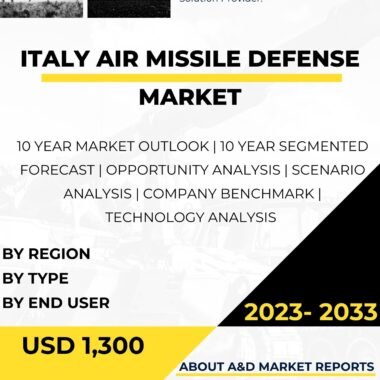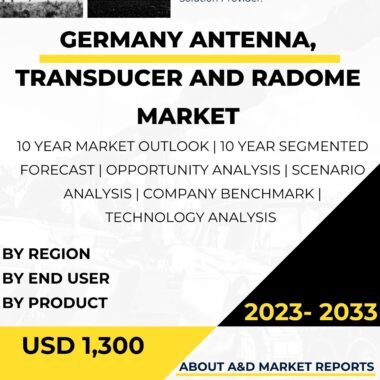Description
Radar, an acronym for “Radio Detection and Ranging,” is a vital technology that has played a transformative role in various aspects of American society, particularly in defense and civil applications. Developed during World War II, radar has since become an indispensable tool for the United States in maintaining national security, guiding military operations, and providing critical information for weather forecasting and air traffic control.
In its simplest form, radar functions by transmitting radio waves or microwaves from a transmitter, which bounce off objects in their path. The reflected signals, or echoes, are then detected by a receiver, allowing the system to determine the distance, direction, and speed of the objects. This ability to detect and track targets, even in adverse weather conditions, has made radar an invaluable asset for both military and civilian purposes.
The United States military extensively utilizes radar technology for intelligence gathering, surveillance, reconnaissance, and missile defense. In the defense sector, radar systems are employed on various platforms, including ground-based installations, ships, submarines, and aircraft, to monitor airspace and maritime environments and to detect and track potential threats.
The Air Force, Navy, and Army all rely on radar systems to detect and track enemy aircraft, missiles, and ships. Ground-based radar installations, such as the AN/FPS-115 PAVE PAWS and AN/FPS-132 COBRA DANE systems, are used to monitor ballistic missile launches and track potential threats to national security.
Aircraft carriers and destroyers in the U.S. Navy are equipped with sophisticated radar systems, such as the AN/SPY-1 and AN/SPY-6, which provide 360-degree coverage, allowing for early warning and target tracking capabilities. These radar systems play a vital role in the Navy’s air defense and anti-missile capabilities.
In the U.S. Air Force, radar is used for air surveillance, early warning, and ground control intercept missions. The Air Force’s airborne early warning and control (AWACS) aircraft, equipped with radar systems like the AN/APY-9, provide crucial real-time situational awareness and command and control capabilities during air defense operations.
Radar also plays a pivotal role in missile defense systems, such as the Ground-Based Midcourse Defense (GMD) system, designed to protect the United States against intercontinental ballistic missile threats. Radars, like the AN/TPY-2, are crucial for tracking and intercepting incoming ballistic missiles during the boost, midcourse, and terminal phases of their flight.
Beyond defense applications, radar technology is integral to air traffic control and aviation safety. The Federal Aviation Administration (FAA) uses radar to track aircraft, ensuring safe separation and guiding planes during takeoff and landing procedures. Terminal radar approach control (TRACON) facilities employ radar to manage aircraft movements in busy terminal airspace.
Weather radar is another vital application of radar technology. The National Weather Service (NWS) uses radar systems, such as the NEXRAD (Next Generation Radar) network, to track precipitation, storms, and severe weather events. These radar systems are instrumental in issuing weather warnings, providing crucial information for disaster preparedness and response efforts.
In addition to defense and weather applications, radar technology has found utility in various civilian sectors. Ground-penetrating radar (GPR) is used for geological and archaeological surveys, infrastructure inspections, and locating buried utilities.
In the automotive industry, radar is a key component of advanced driver-assistance systems (ADAS) and autonomous vehicles. Radar sensors enable features like adaptive cruise control, collision avoidance, and lane-keeping assistance, enhancing road safety and reducing accidents.
Moreover, radar is instrumental in marine navigation, enabling ships to detect obstacles, monitor navigational hazards, and maintain situational awareness in busy waterways.
The continuous development of radar technology has led to advancements in radar resolution, accuracy, and data processing capabilities. Modern radar systems incorporate digital signal processing, synthetic aperture radar (SAR) techniques, and software-defined radar, enabling higher-resolution imaging and target discrimination.
Cognitive radar, a cutting-edge concept, utilizes artificial intelligence and machine learning algorithms to adapt radar signals and processing based on the environment and specific mission requirements. This technology has the potential to enhance radar performance and countermeasures against electronic warfare threats.
The United States continues to invest in radar research and development to maintain technological superiority and address emerging challenges. The defense industry, in collaboration with government agencies and research institutions, works to improve radar capabilities, reduce size and weight, and enhance integration with other sensor systems and communication networks.
However, radar technology is not without limitations. Certain environmental factors, such as precipitation, can attenuate radar signals and reduce their effectiveness. Additionally, stealth technologies employed by modern adversaries present challenges to radar detection and tracking.
To address these challenges, the U.S. military is exploring complementary sensor systems, such as infrared and electro-optical sensors, to augment radar capabilities in complex operational environments.
Furthermore, the growing threat of electronic warfare, including jamming and spoofing of radar systems, necessitates the development of advanced countermeasures and resilient radar architectures.
In conclusion, radar technology remains a cornerstone of the United States’ defense and civil capabilities. From military surveillance and missile defense to weather forecasting and air traffic control, radar plays a vital role in safeguarding national security and enhancing public safety.
Advancements in radar technology continue to drive innovation in various sectors, enabling higher-resolution imaging, adaptive signal processing, and improved target tracking capabilities.
As the United States faces evolving threats and challenges, radar research and development will remain a priority, ensuring that this essential technology continues to contribute significantly to the nation’s security and well-being.




